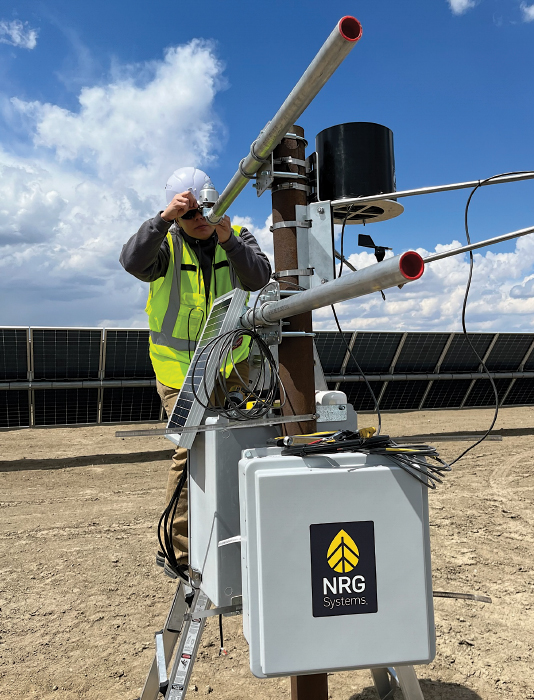As the effects of climate change become increasingly apparent across the globe, Canada is working hard to mitigate its contributions. Part of its multi-pronged action plan is to significantly cut its emissions, striving to have 90% of its electricity coming from non-emitting sources by 2030. This includes providing its inhabitants with universal access to affordable, reliable and sustainable clean energy.
While Canada has made significant progress on this front, achieving these ambitious clean energy goals hinges on the continued growth and stability of electricity generated from renewables. To this end, Canada recently commissioned the Travers Solar Project, its largest utility-scale PV plant to date. The 465 MW project spans 3,300 acres and is expected to provide enough electricity to power 150,000 homes, offsetting more than 472,000 tons of greenhouse gas emissions annually. Projects of this scale are critical to Canada’s transition to renewables; their reliable performance is another vital part of the equation.
Better measurements for better energy outcomes
When a solar developer is planning a potential PV project, they perform solar resource assessment campaigns to determine how much energy is available at a given site. The resulting data is critical to creating achievable energy production targets and securing project financing. Thus, the accuracy of this pre-construction data is paramount as any missteps could lead to poor performance once the project becomes operational.
It is equally important to collect high-quality resource monitoring data once a solar plant is operational and producing energy. One way that solar developers ensure their projects are producing the amount of energy they have projected is to install weather stations that monitor a variety of site-specific parameters. Together, the data collected by these systems play a critical role in determining a project’s performance ratio, an IEC-mandated requirement that compares the measured output against expected output for a given reporting period.
The Importance of reliability and experience
When it came time to select a resource monitoring solution for the Travers Solar Project, the EPC responsible for Travers’ engineering, procurement and construction, reached out to the SCADA engineering and integration provider on the project for assistance. That provider then turned to a global resource measurement and intelligence leader they had worked with frequently in
the past on a wide range of solar monitoring campaigns.
The monitoring solution for Travers not only had to accommodate the project’s impressive scale, but it had to comply with the Alberta Electric System Operator (AESO)’s stringent requirements per ISO Rules, Section 304.9. AESO is responsible for operating Alberta’s power grid and the requirements outlined in Section 304.9 dictate the meteorological data that must be captured by wind and solar generating facilities that are connected to the local electric system. An additional consideration when selecting a resource monitoring solution for Travers was system durability, given Alberta’s harsh conditions.
The resource monitoring solution was selected for several reasons. The system was entirely turnkey, featuring all components needed to capture the relevant, AESO-mandated meteorological parameters for the project, including solar irradiance, module temperature, soiling conditions and albedo. While flexible enough to be configured to meet Travers’ unique requirements, the system could easily be standardized for repeatable installation across the plant, making deployment straightforward and efficient.
As a 40+ year veteran in the renewable energy space, the resource measurement and intelligence company also provided critical input to determine an installation layout that met AESO guidelines for the systems. The company worked with the EPC to create a system design that would provide an even distribution of measurements across the site.
Finally, the resource measurement solution selected for the project has been proven to operate reliably in harsh conditions. The company even created project-specific power supplies designed to keep the stations running autonomously, should grid power fail in the challenging environment.
Mike Crawford, a senior program manager for the SCADA engineering and integration provider, said, “We have worked extensively with this resource measurement and intelligence provider and their solar solutions. Their systems offer a unique combination of flexibility and repeatability, allowing for project-specific customization within a framework that is easily replicated across a single plant or multiple plants. This has been an especially important feature for the Travers project, given the project had strict requirements and contains more than one-million PV modules across the 3,300 acres. Having reliable meteorological stations distributed across the site is critical to the project’s performance, and we can count on this company to deliver.”
Powering the future
With assistance from the resource measurement and intelligence provider, all monitoring systems were installed and commissioned ahead of Travers becoming fully operational in early 2023. With reliable solar resource monitoring systems in place, the project owner can ensure that this remarkable site is achieving its peak performance potential for years to come.

Leon Hailstones drives NRG’s marketing strategy and new product development. He has over a decade’s worth of international channel development, product management and marketing experience in solar and microgrid technologies. He previously served as a product manager with the global Schneider Electric Solar Business and holds an MBA from Simon Fraser University in Vancouver, Canada.









